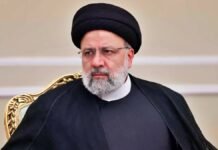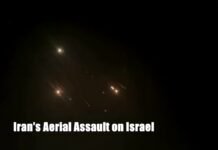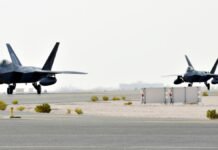
Jerusalem: Iran announced on Saturday that it has successfully launched a satellite named Sorayya (meaning ‘Pleiades’ in Persian) and placed it in the highest orbit ever achieved by the Islamic Republic. The satellite was launched by a three-stage rocket called Zoljanah (meaning ‘chainmail’ in Persian) from a desert site in central Iran.
Sorayya is part of Iran’s civilian space program, which aims to develop scientific and technological capabilities in the field of aerospace. Iran claims that the satellite is used for peaceful purposes, such as remote sensing, telecommunications, and meteorology. However, no further details have been provided about the specifications, functions, and objectives of the satellite.
The launch of Sorayya is also seen as a demonstration of Iran’s military and strategic prowess, as it is linked to the space program of the Islamic Revolutionary Guard Corps (IRGC), the elite branch of Iran’s armed forces. The IRGC oversees the development and testing of Iran’s ballistic missiles, which are capable of carrying conventional and nuclear warheads. The Zoljanah rocket, which carried the Sorayya satellite, is said to be based on the same technology as Iran’s ballistic missiles.
The launch of Sorayya has raised concerns among Western countries, especially the US, which view Iran’s space program as a cover for its nuclear and missile ambitions. The US has accused Iran of violating a UN Security Council resolution that calls on Iran to refrain from any activity related to ballistic missiles designed to deliver nuclear weapons. The US has also imposed sanctions on Iran’s space agencies and officials for their involvement in the space program. The UN sanctions related to Iran’s ballistic missile program expired in October 2020, as part of the 2015 nuclear deal, which Iran has been gradually breaching since the US withdrew from it in 2018.
How does the launch of Sorayya affect the regional situation?
The launch of Sorayya comes at a time when the region is witnessing heightened tensions and conflicts, involving Iran and its rivals. The launch coincides with the ongoing Israeli airstrikes against Hamas targets in the Gaza Strip, which have killed more than 200 Palestinians and injured more than 1,000 others. Iran is a staunch supporter of Hamas, the Islamist group that controls Gaza, and has condemned Israel’s aggression and vowed to stand by the Palestinian cause.
The launch also follows the recent exchange of air strikes between Iran and Pakistan, which have accused each other of harboring and supporting militant groups that carry out cross-border attacks. Iran has blamed Pakistan for hosting the Sunni extremist group Jaish al-Adl, which claimed responsibility for a suicide bombing that killed 27 IRGC members in February 2019. Pakistan has blamed Iran for hosting the Baloch separatist group Balochistan Liberation Army, which claimed responsibility for an attack on a luxury hotel in Gwadar in May 2019.

The launch of Sorayya is likely to increase the pressure and scrutiny on Iran from the international community, especially the US, which is seeking to revive the nuclear deal and curb Iran’s nuclear and missile activities. The launch may also affect the ongoing negotiations in Vienna, where Iran and the remaining parties to the nuclear deal are trying to find a way to restore the agreement and lift the sanctions. The launch may also provoke a response from Iran’s regional adversaries, such as Israel, Saudi Arabia, and the UAE, which have expressed alarm over Iran’s growing influence and capabilities in the region.



















































